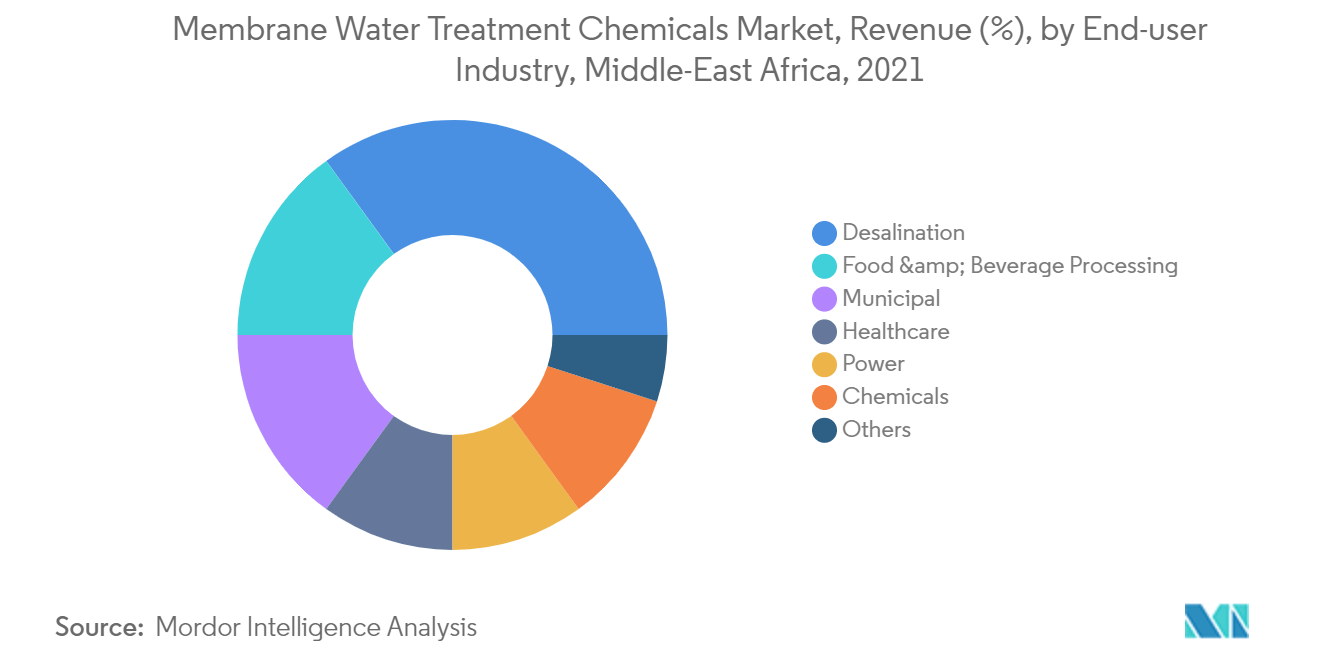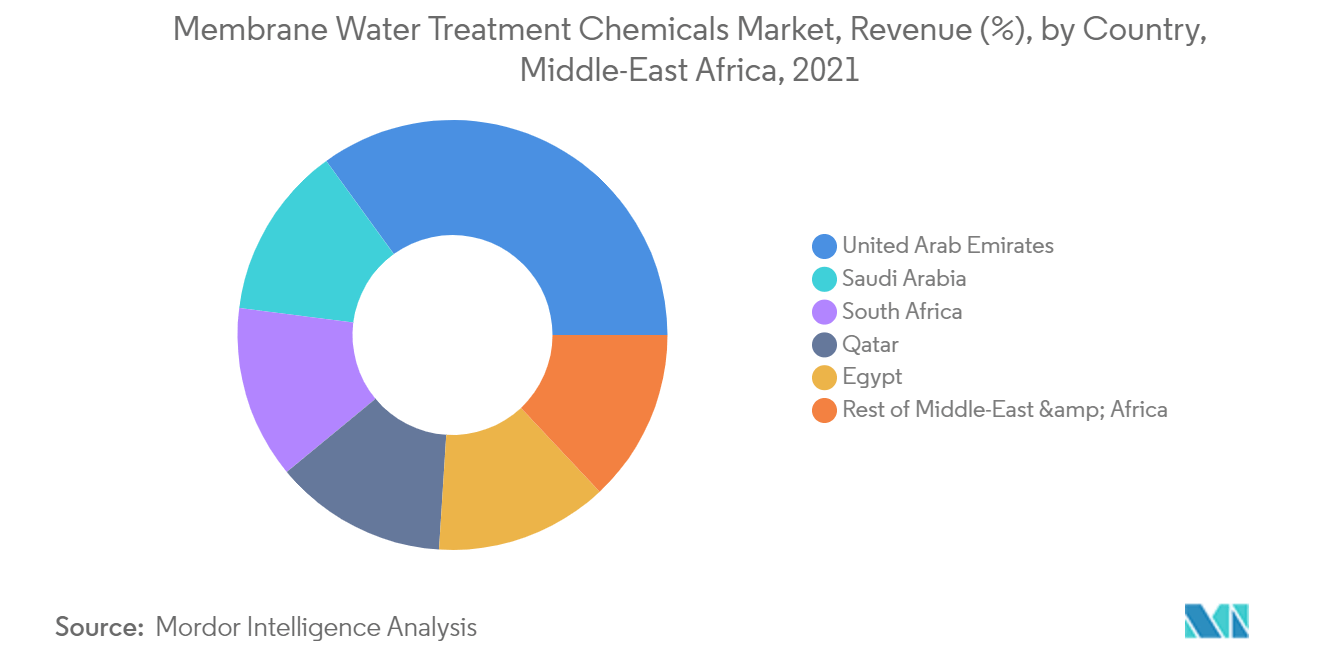Market Trends of Middle-East and Africa Membrane Water Treatment Chemicals Industry
This section covers the major market trends shaping the MEA Membrane Water Treatment Chemicals Market according to our research experts:
The Desalination Industry is Expected to Dominate the Market
- The Middle-East and African region is one of the driest in the world, with only 2% of the world's renewable water supply. The demand for water in this region is growing at a fast pace due to the increasing population and agricultural activities in the region.
- The desalination process, which primarily includes removing minerals from salty water, is used to make use of saline water. The majority of contemporary desalination applications have been focused on producing freshwater.
- The MENA region is one of the most water-stressed locations on the planet. Today, citizens of the region have little over 1,000 cu m to utilize due to rapid population growth, compared to a global average of over 7,000 cu m. By another metric, the MENA area has 14 of the world's top 20 water-scarce nations.
- According to a World Bank report, the yearly cost of the demand gap for clean or desalinated water in the MENA (Middle-East North Africa) region may rise from USD 104 billion to USD 300 billion per year.
- Government and industry leaders in the Middle East and North Africa are attempting to bridge the demand gap for clean or desalinated water by forming partnerships and ensuring long-term water security solutions.
- Hence, owing to the above-mentioned reasons, the desalination industry has accounted for the major share of the Middle-East and African membrane water treatment chemicals market.

The United Arab Emirates May Dominate the Market
- The United Arab Emirates is one of the Gulf Cooperation Council countries, which continues to irrigate, drawing water in from the ground (exhaustible aquifers) and from rivers down mountain slopes.
- The Arab States area is one of the most popular migrant worker destinations in the world, with significant growth in recent years. The migrant-to-local labor ratio is among the highest in the world.
- In the first three months of 2021, the UAE received just 1.2 mm of rain, underscoring the need for the government's long-term goal to increase water security.
- The UAE Water Security Strategy 2036 seeks to guarantee long-term sustainability and access to water in both regular and emergency situations. With the collaboration of all entities and agencies connected with water resources in the country, the plan was designed from a broad national perspective to encompass all parts of the water supply chain in the country.
- Hence, owing to the above-mentioned factors, United Arab Emirates is expected to dominate the market studied during the forecast period.


